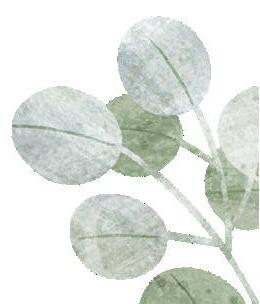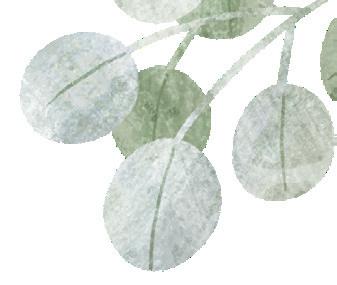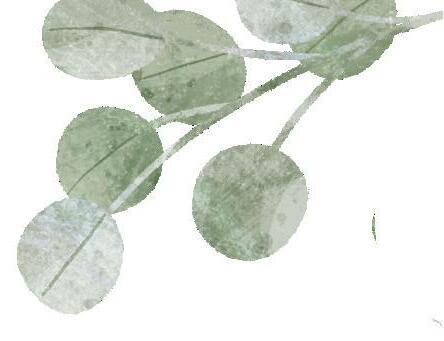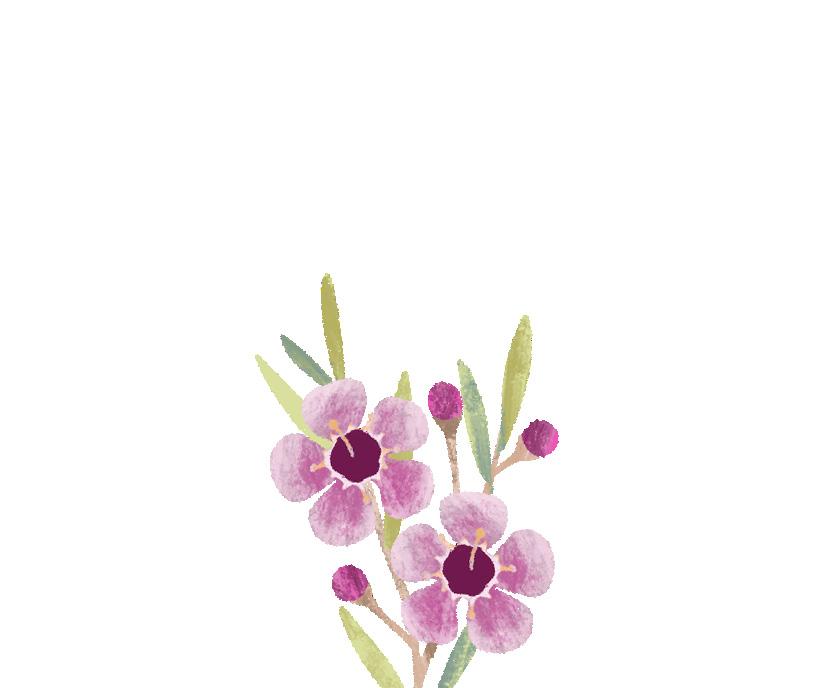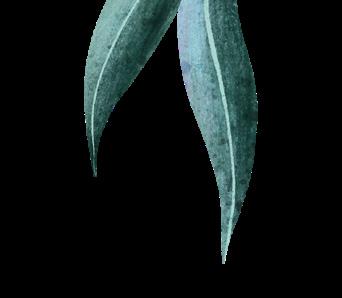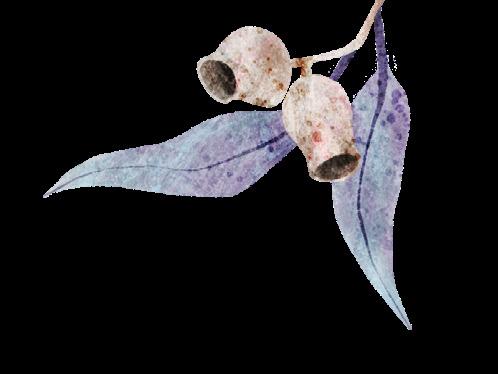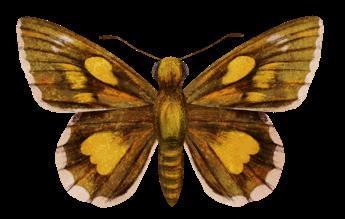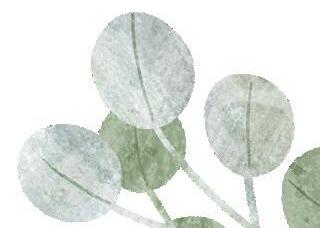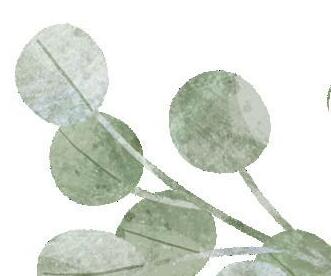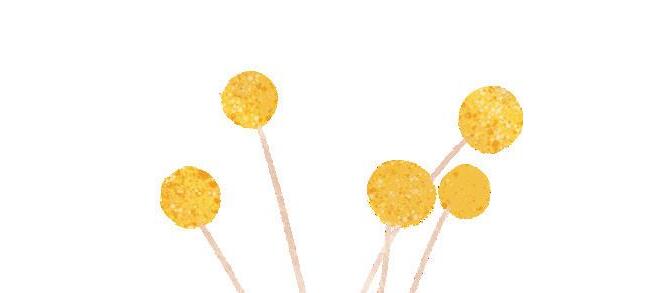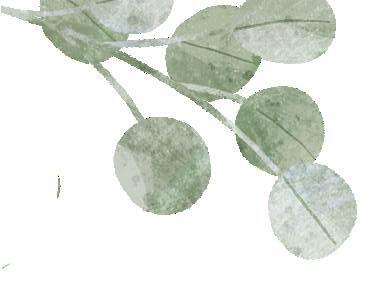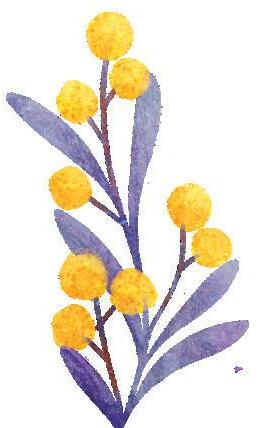A GUIDE TO GROWING INDIGENOUS PLANTS IN YOUR GARDEN
ACKNOWLEDGEMENTOF COUNTRY
We acknowledge the Bunurong People of the Kulin Nation as the Traditional Custodians of these lands and waterways in Hobsons Bay. We respect their deep connection with the land and pay our respects to their Elders past and present. We recognise the rich natural assets it holds, from the coastline and saltmarsh to the grasslands and creeks, abundant with diverse wildlife and flora. Fostering a learning and caring approach to these important ecosystems, we are committed to incorporating these values into our conversations, work, and daily lives to enhance our local environment.
TRANSFORMING YOUR GARDEN INTO A HABITAT GARDEN IS A SMALL GESTURE THAT MAKES A BIG DIFFERENCE.
CONSERVATION HOT SPOTS
A great way to learn about the appearance of our indigenous plants and the environments where they thrive is to visit them in their natural environment. Hobsons Bay is home to several significant conservation reserves, including:
GRASSLANDS
• Bluebells Grassland
• Emu-foot Grassland
• Maidstone St Grassland
• Horsburgh Dr Grassland
• Clement Reserve Grassland
• Doreen’s Grassland
COASTAL AND FORESHORE
• Altona Coastal Park
• Laverton Creek Estuary and Sandy Spit
• Sandy Point Nature Reserve
• Rifle Range/Jawbone Reserve
• Truganina Park
When planting local native species, you: provide habitat and food for urban wildlife, enhance biodiversity, improve ecosystems, and connect our green corridors.
A Habitat Garden that attracts wildlife can be easily achieved. Designing any garden can be daunting, a smaller area is more manageable when beginning your habitat gardening journey. This booklet will assist you in the design and implementation phases of creating your Habitat Garden. You will learn how to incorporate local plants already adapted to climatic conditions and help them to thrive in your garden space.
WETLAND / CREEK
• Kororoit Creek
• Skeleton Creek
• Laverton Creek
• Stony Creek
• Paisley Challis Wetland
• Cyril Curtain Wetland
• Laverton Stormwater Harvesting Reserve
PLANTING NATIVE PLANTS IN YOUR GARDEN IS AN EASY BUT EFFECTIVE WAY TO ATTRACT WILDLIFE.
Your native garden creates stepping stones across the municipality, offering food and shelter to local fauna. By fostering a diverse and thriving ecosystem in your own backyard, you contribute to the overall health and vitality of the environment, benefiting both wildlife and your garden’s beauty.
Birds are beautiful creatures that are a joy to watch in any garden. Many birds feed on plants in the garden but also on common plant pests such as aphids and scale, assisting with pest problems. To attract birds to your garden, consider the following points.
SHELTER
Birds need shelter from predators such as cats and predatory birds. Birds love prickly or dense plants at various levels in your garden.
WATER
A reliable water source, particularly in summer will attract birds to your garden. If you install a birdbath, place it near dense or prickly plants to provide birds with protection from predators.
FOOD
Small birds - Silvereyes, Blue wrens, Finches, Fantails and Thornbills forage in the lower levels of the garden. They feed on insects to help keep plant pest numbers down. Native grasses such as Common Tussock-grass (Poa labillardieri), Kangaroo-grass (Themeda triandra) and Wallaby grass (Rytidosperma spp.) provide an important source of food for grass seed eating birds such as Red-browed Finches
Honey Eating birds – Honeyeaters, Red Wattlebirds and Eastern Spinebills are specialist nectar feeders. They use their brush-like tongues to collect nectar from the flowers of Melaleucas, Correas, and Banksias. They also like to eat insects as a source of protein.
Parrots – Hobsons Bay is home to a diverse range of parrots such as Rosellas, Rainbow Lorikeets, Cockatoos, and the nationally endangered Swift Parrot. These feed on the flowers and seeds of Eucalyptus species and other smaller shrub species.
Large birds – Magpies and Kingfishers feed on larger insects and small lizards and skinks. Ravens are an opportunistic feeder that feed on a wide variety of plant and animal material, and food scraps in urban areas.
TIP ~ Please do not feed birds with bird seed or food scraps. This encourages dependence on humans and can lead to disease.
ATTRACTING WILDLIFE INTO YOUR GARDEN
What could be more interesting than watching tadpoles grow into frogs and then being serenaded by their calls at night? in your garden as they eat flies, mosquitoes, slugs, snails and even spiders. In order to enjoy frogs in your garden you will need to provide a pond with certain features, but you’ll also need to live near a frog population to attract them from.
THINGS TO AVOID
• Fish – most fish will eat tadpoles.
• Fountain pumps – tadpoles and eggs can be killed by them
• Cats and dogs – protect the frog area of your garden with sharp, spiky plants
• Chemicals – frogs eat insects, so you don’t want to spray them. Frogs are very sensitive to chemicals which can be absorbed through their thin skin
• Allowing floating plants such as Duckweed or Azolla to cover the top of the pond. This can result in reduced oxygen levels for tadpoles
• Cleaning out the pond too often –tadpoles need some material to be breaking down in the pond water to provide food for them
• Collecting tadpoles from the wild is illegal in most parts of Australia including Victoria.
A frog pond can incorporate one or all of the requirements for each part of the frogs’ lifecycle:
• Damp bog zone for adult frogs
• Shallow water zone for laying eggs
• Deep zone of at least 30cm for tadpoles.
Your frog garden should also have:
• Soft, thick vegetation that droops into the water, for shelter and protection
• Rocks, logs, bark and leaf litter;
• Mostly shade
• Sloping sides for frogs to crawl out
• Been made from non-toxic materials (concrete ponds will need to be sealed and plastic ponds be made of food-grade plastic)
• Food plants for tadpoles (and they will eat them, so don’t put your prize waterlily in there).
FROG-FRIENDLY PLANTS:
Tufting plants – Pale Rush (Juncus pallidus) or Black-anther Flax-lily (Dianella admixta).
Bog plants - Common Sedge (Carex tereticaulis), Knobby Club-rush (Ficinia nodosa), Sea Rush (Juncus kraussii) and Bare Twig-rush (Baumea juncea).
Water plants – Common Nardoo (Marsilea drummondii), Purple Loosestrife (Lythrum salicaria), Tassel Sedge (Carex fascicularis) and Water Ribbons (Triglochin procerum).
Most lizards found in the garden are little Grass Skinks that feed on insects and larvae. You may be fortunate enough to encounter a larger lizard such as a Blue-tongue, but these beautiful creatures are not as common as they used to be.
TO CREATE LIZARD HABITAT IN YOUR GARDEN, PROVIDE THE FOLLOWING:
• Tussock grass and hiding spots between rocks and logs for protection
• A protected sunny spot on a rock, log or brick path
• Natural leaf mulch to support the insects and larvae they feed on.
Avoid using snail bait as Bluetongue lizards will eat the poisoned snails - use a beer trap instead.
ATTRACTING WILDLIFE INTO YOUR GARDEN
Butterflies are a welcome addition to any garden and with a few simple design principles are easily attracted. In its caterpillar form, the Altona Skipper Butterfly, found predominantly in Altona, relies solely on the native Chaffy Saw Sedge for survival. It’s currently classified as a vulnerable species and depends on the availability of its native habitat plant — the Chaffy Saw Sedge (Gahnia filum), to survive.
NECTAR TRAPS
Colourful, massed flower beds draw butterflies in and keep them happily moving through the garden. They are attracted to a large range of coloured flowers, in particular blue, yellow and red.
FLOWERS
Simple, flat flowers make it easier for butterflies to extract nectar. Double flowers (multiple layers of petals) are difficult for butterflies to feed from, but simple flowers like Daisies, Pelargoniums (Pelargonium australe), Bluebells (Wahlenbergia communis) and Saltbush plants (Atriplex semibaccata) are more
Young plants and new growth are vital for the survival of the Skipper. For the survival of the food plant (Gahnia filum), inundation by water for up to six weeks must take place to ensure germination of new plants. Help increase and stabilise the population of the Altona Skipper Butterfly by increasing the number of Chaffy Saw Sedge seedlings planted.
POSITION
Butterflies use the early morning sun to warm themselves and retreat to cooler, shadier places during the heat of the day. Providing a sheltered position that combines warmth and protection is ideal. Also consider adding flat rocks for butterflies to bask and to court each other. Mud puddles or a dish of damp sand can provide them with water and salts.
HOST PLANTS
Hobsons Bay has a rich natural environment, that includes remnant native grasslands, five waterways, significant wetlands and foreshore areas. The combination of significant biodiverse areas within a highly developed landscape is unique for a metropolitan Council.
Alterations to the natural environment can have a number of impacts including the loss of biodiversity and decrease in habitat.
URBANISATION
Highly developed urban and industrial landscapes has resulted in isolated patches of native vegetation that are not well connected, making it difficult for species to move and reproduce leading to species decline.
CLIMATE CHANGE
PEST SPECIES
There are several pest species that pose a risk to native flora, fauna and ecosystems within Hobsons Bay. Pest plants are extremely resilient, outcompete indigenous flora and spread easily via wind, water, machinery and through human and animal movement. Pest animals are highly mobile, have few natural predators and have high rates of reproduction, resulting in high population numbers and increased competition for food and shelter.
POLLUTION
Incorporate host plants for butterflies to lay eggs. Caterpillars are generally small and shy, and won’t devastate the garden. Popular indigenous plants include Sweet Bursaria (Bursaria spinosa) and Spinyhead Matrush (Lomandra longifolia), and grasses such as Kangaroo-grass (Themeda triandra), Wallaby-grass (Rytidosperma spp.) and Common Tussock-grass (Poa
The global climate is changing and poses a significant threat to biodiversity as it is difficult for native species to adapt quickly to new conditions. Climate change risks that will impact biodiversity in Hobsons Bay include coastal flooding and sea level rise, heatwaves, intense rainfall events, an overall increase in temperature coinciding with an overall decrease in rainfall.
Pollutants, including chemicals and litter, harm our natural environment by contaminating waterways , affecting conservation reserves, and impacting native plants and animals.
1. GO FOR A WALK
Take a stroll through your garden and neighbourhood and find out what wildlife already exists within your area. Study the native plants that thrive locally in open spaces and gardens as they are adapted to local climatic conditions. Plants don’t exist in isolation so take note of the layers of plants. Notice the continuous layer of vegetation starting from ground covers, small plants such as grasses and wildflowers, larger shrubs and then the overstorey created by trees. Creating a Habitat Garden provides shelter and food for wildlife, establishes greater genetic diversity and broader ecosystem connectivity.
3. PLAN YOUR HABITAT GARDEN
What style of garden do you want?
• Contemporary, cottage, natural?
• What wildlife do you want to attract?
• Plant consideration to suit our garden
• Style of garden
• Size of garden
• Plant requirements ie; water, soil type, sun
• Plant growth patterns ie; height, width
• Wildlife requirements ie; food, shelter
• Visit your local indigenous plant nursery for further assistance on plant selection
2. START SMALL AND LOOK AT YOUR GARDEN
A smaller area is more manageable when beginning the Habitat Garden journey. Create a site analysis of your garden:
Climatic conditions:
• Sun and shade areas
• Which way the site is facing ie. where is North? A North facing garden will be hotter and drier
Elements to be removed or retained:
• Existing plants
• Pedestrian or vehicle areas
• Existing infrastructure
Neighbouring properties:
• Location of buildings
• Location of trees
Soil type:
• Sandy, clay, loam, well-drained etc
4. EXISTING PLANTS DO NOT NEED TO BE REMOVED
What style of garden do you want?
Not all existing plants need to be removed. Keeping large plants and shrubs in your garden will protect the young seedlings as they establish and keep the weeds down. Existing plants can provide habitat, shelter and food for local wildlife. Gradually replace existing or weedy plants as indigenous plants establish. A quick and easy way to enhance your garden is to prune the lower branches of your trees and shrubs and underplant with ground covers and wildflowers.
ATTRACTING WILDLIFE INTO YOUR GARDEN
Example of a wildflower meadow design
Plant selection is a very important component of the garden design which affects how your garden looks and also how it contributes to the wider environment.
Factors that will guide plant selection for your garden include soil type, drainage patterns, aspect (i.e. full sun, part shade and shade) and local climate. Also consider what you are planting for i.e., a shade tree for summer or something that will produce fruit. For best results, plants should be grouped together according to their sun/shade, water and fertiliser needs.
Visit a garden centre to find a plant to suit the position you have in mind, not the other way round.
SOIL IMPROVEMENT TIPS
• Soil should be damp before you add mulch, generally spring is the best time to apply mulch, once the winter rains have soaked in.
Healthy soil = healthy plants. Soil needs organic matter (leaf litter, compost, manure, grass clippings).
Local (indigenous) plants are well suited to the local soil and climate conditions, do not require large amounts of nutrients and once established, require little water. Check that your supplier has sourced local provenance seed for best results. There are many beautiful plants indigenous to Hobsons Bay that are featured in this section of the booklet.
• Spreading compost over your soil (before mulching) will encourage worms in your garden. Straw based mulches are a good option if you have not mulched the soil for a long time as they break down quickly, returning nutrients to the soil – excellent for the vegie garden! Bark mulch has very few nutrients so don’t rely on it to improve your soil.
• Soil improvement using straw based mulch placed on the soil surface is generally only required for exotic plants, vegetables and fruit trees. Most local and native plants like a relatively infertile soil so they prefer a bush mulch or recycled timber mulch on its own without soil improvement.
Worms break down organic matter to make food for plants, and worm burrows allow air into the soil so that plant roots can breathe. Organic matter needs to be replaced as plants absorb nutrients.
• When buying new soil for your garden, buy a soil that is mixed with recycled organic or compost or a native mix blend, do not just buy a topsoil.
• When watering use a trigger hose with a spray setting so as not to compact the soil as the water hits. The concentrated pressure of the water stream can close up valuable air spaces.
There is also a great range of native and exotic plants available in garden centres but you should always avoid using plants that are known environmental weeds.
Two thirds of the weeds found in Victoria’s natural environment (parks, and along waterways and coasts) are actually ‘garden escapees’. Their seeds are spread from gardens by the wind, birds and animals or by people dumping garden cuttings into the bush and waterways.
Weeds compete with our local plants for light, nutrients and water. Before too long they can replace local plants, leaving
native animals without food or habitat. As gardeners we need to know which plants can escape.
CHECK THE PEST FLORA AND FAUNA PAGE FOR FURTHER INFORMATION
There is a wide range of soil types across Hobsons Bay. This includes clay and sandy soils, both of which are predominant across the municipality, and both of which many gardeners struggle with. Clay soils harden when dry and become ‘sticky’ and waterlogged when wet. To improve a clay soil sprinkle a thin layer of gypsum across the surface of the soil. Add lots of organic matter such as compost and aged animal manures and dig into the soil. This will open up the soil, allowing oxygen to fill the pore spaces and will provide a receptive environment for the micro-organisms that can ‘unlock’ the nutrients held within the soil. You could also build raised garden beds, which have the benefit of allowing you to purchase high quality soil to put in them. Thus, you avoid having to work with clay or sandy soils and you also can be certain that no soil contaminants are present. They can also have health benefits as you do not need to bend over to tend to them, reducing back strain.
SCAN ME
Lawn has its place in our gardens, it’s great to play on and our pets love it, however it provides little habitat for pollinators and other animals that make up a diverse, healthy ecosystem. Removing a small section of lawn, widening an existing garden boarder or planting out your naturestrip provides habitat and connects our green corridors. Turf grass or lawn is a tenacious plant that’s bred to spread and self-repair. The process of removing your lawn requires patience and hard work, the key to creating a low maintenance habitat garden is preparation.
METHOD 2 : SMOTHERING YOUR LAWN
WHERE TO BEGIN:
Mark out your new garden bed with a hose, stakes and string or marking spray paint.
Mow your lawn on the lowest setting and scalp the grass.
Choose your method:
METHOD 1 : TURF REMOVAL
• Mow your lawn on the lowest setting.
• Use a mattock or shovel to scalp the top 70mm of lawn and soil. Digging deeply will remove the seed bank.
• Take the time to remove any stray roots or runners
• Remove as much soil from the roots as possible and compost your turf.
• Replenish lost soil with a native soil mix, plant and then apply 75mm of coarse mulch over the top.
Pros: A quick and effective method and you can plant straight away.
Cons: The work is very physical and unless careful you can lose a lot of soil.
• Mow your lawn on the lowest setting and water area thoroughly.
• Place brown cardboard over the grassed area.
• Lightly water the cardboard. Check there are no gaps.
• Spread 100mm of native soil mix and organic matter over cardboard.
• Add 75mm of coarse mulch on top coarse.
• Wait 6 to 12 weeks for the cardboard to decompose and lawn to die before planting OR if planting tube stock immediately, create a hole through the mulch and soil, taking care not to make a hole in the cardboard and plant.
Pros: No digging or heavy lifting and there is no need to remove the dead grass - it will decay and become a source
• Provide automatic top up connected to mains water. Frog ponds require water year round.
• Place your pond in areas that receive sunlight in the morning and are protected by shade in the afternoon
• Avoid positioning frong ponds underneath deciduous trees, this contributes to poor water quality.
• Never relocate a frog or tadpole from another pond, this can spread disease. If you build it, they will come.
• A good diversity of water bugs indicates a healthy pond.
• Ensure polluted water cannot enter the habitat. Do not position the pond downstream from areas where herbicides or pesticides are used.
PLANTS FOR FROG PONDS
SHALLOW ZONES: Alisma plantagoaquatica, Carex fascicularis, Cyperus gunnii, Juncus subsecundus, Marsilea sp., Rununculus inundatus.
INTERMEDIATE & DEEP ZONES: Carex fascicularis, Damasonium minus, Ficinia inundata, Myriophyllum crispatum,Triglochin procera, Villarsi reniformis.
POND EDGE: Austrodanthonia spp., Dianella sp., Dichondra repens, Hardenbergia violacea, Lomandra longifolia, Viola hederacea,Themeda triandra, Microleana stipoides.
Avoid plants that form a mat on top of the water eg. Duckweek and Azolla, these plants make it difficult for tadpoles to receive oxygen.
A dry creek bed that ends with a bog garden is a wonderful design feature for clay soil. A bog garden is a patch of slow draining, waterlogged soil that mimics natural bog conditions. The rich diversity of plants that grow in these conditions provide resources for a variety of wildlife. A bog garden is different to a rain garden or a frog pond.
STEP 1
Study natural water features and notice the size and position of rocks and plants that grow along streams and waterways.
STEP 2
Learn how water moves through your garden. Outline the shape and area of your dry creek bed & bog garden using rope or hose. Streams & creeks are rarely linear. Work with the natural fall of your garden & the lay of your land. The dry creek bed can lead from roof downpipes, a water tank overflow pipe or a paved surface. Build your bog garden at the lowest point & ensure the water is running away from the foundations of your house.
STEP 3
Dig a shallow swale for your dry creek bed 35 - 40cm deep and a hole 45 - 50cm deep for your bog garden.
STEP 4
Select stone that is local to your area. For a natural look use multiple sizes of stone, aim for four to five sizes. Place small stones at the bottom of the bed, with the large stones progressing up the sides of the stream. Use a mallet to embed small rocks into the soil.
• Place smaller groundcovers towards to the edge of the creek bed and bog to soften the edges.
• To establish a rhythm that creates a natural look and carries the eye throughout the space, repeat specific plants from bank to bank, staggering them so they are not directly opposite each other.
PLANTS FOR BOG GARDENS
• Alisma plantago – aquatica
• Brachyscome basaltica
• Bulbine bulbosa
• Calocephalus lacteus
• Carex fascicularis
• Craspedia paludicola
• Dianella brevicaulis
• Dichondra repens
• Ficinia nodosa
• Juncus spp.
• Pycnosorus spp.
• Ranunculus inundatus
• Viola hederacea
• Walhenbergia gracilis
Indigenous plants have adapted to local soils. Use a native soil mix or compost if soil needs to be improved. Avoid chicken manure, mushroom compost, coloured mulch & impervious or synthetic weed mat.
WATERING
It takes three months for tubestock to become established. Water young plants weekly during the first few months and monitor carefully during warmer months.
TIP ~ plant between May and early August to maximise winter rains of cooler months to help establish robust plants for the upcoming year.
HOW TO PLANT? WHICH MULCH?
Mulch helps to maintain soil moisture, reduces the need for watering and supresses weeds.
Apply heavy organic mulch such as bark or wood chips 12mm to 25mm in size, a chunky mulch will resist disturbance by wind and rain.
HOW MUCH?
Apply mulch to at least 75mm depth, this will last all year. Council does not supply mulch; call your local garden supply centre and give them your habitat garden bed length and width and mulch depth (75mm) and they will deliver mulch to your door.
TIP ~ Keep mulch four fingers width away from plant stems or trunks or it can cause fungal growth and disease.
SCAN ME
Habitat Gardens
www.hobsonsbay.vic.gov.au/Community/Conservation/Habitat-Gardens
Contact email habitatgardens@hobsonsbay.vic.gov.au



